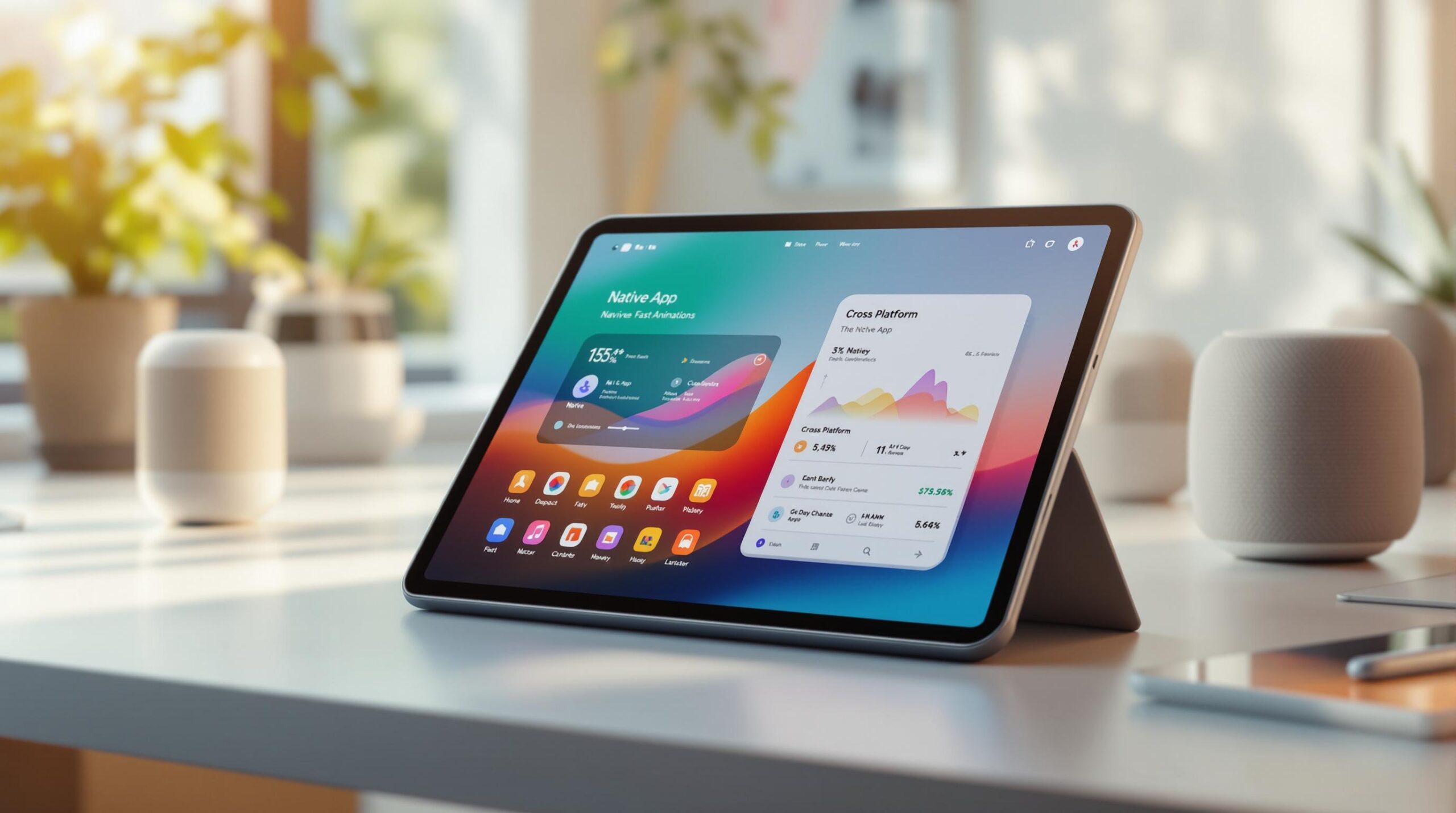
When deciding between native and cross-platform apps for IoT devices, your choice impacts performance, cost, and development speed. Here’s a quick breakdown:
- Native Apps: Best for high performance, strong hardware integration, and advanced security. Ideal for critical IoT tasks like healthcare and industrial monitoring.
- Cross-Platform Apps: Faster and cheaper to develop, great for projects with moderate performance needs like smart home automation.
Quick Comparison
| Feature | Native Apps | Cross-Platform Apps |
|---|---|---|
| Performance | Faster, low-latency | Moderate, slower due to abstraction layers |
| Hardware Access | Full, direct integration | Limited, may need native modules |
| Development Cost | Higher per platform ($25K–$50K) | Lower for multiple platforms |
| Development Speed | Slower (200+ hours) | Faster (100+ hours) |
| Maintenance | Separate updates per platform | Single codebase, easier updates |
Key Takeaway
Choose native for precision and performance-critical IoT apps. Opt for cross-platform when cost and speed are priorities. For complex projects, a hybrid approach may combine the strengths of both.
Cross-Platform vs Native: What’s Best for Your App in 2024?
Native Apps for IoT
Native Apps Explained
Native apps are built using programming languages and tools specific to a platform – like Swift or Objective-C for iOS and Java or Kotlin for Android. These apps interact directly with a device’s hardware and operating system, offering tailored performance and deeper integration for IoT applications.
Advantages for IoT Projects
Faster Performance: Native apps communicate directly with hardware, enabling quick data processing and real-time responses. This is crucial for tasks like monitoring industrial sensors or managing medical IoT devices.
Stronger Security: Using platform-specific security protocols and encryption helps safeguard sensitive IoT data, which is especially important in areas like smart home systems and healthcare.
Seamless Hardware Access: Native apps can directly interact with hardware components like Bluetooth, GPS, or sensors. This ensures accurate data collection and smooth communication between IoT devices.
Improved Battery Efficiency: Platform-level optimizations can help extend the battery life of IoT devices like wearables and sensors.
Challenges to Consider
While native apps offer many benefits, they come with some hurdles:
Higher Costs: Developing separate apps for each platform requires multiple teams, increasing both development and maintenance expenses.
Longer Development Time: Each platform needs its own development cycle, testing, and deployment, which can delay project timelines.
Platform Dependency: Native apps are tied to specific operating systems and hardware, which can lead to issues like:
- Compatibility with OS updates
- Limited support across multiple devices
- Challenges during system-wide updates
Increased Resource Needs: Managing multiple codebases demands more resources, including:
- Dedicated teams for each platform
- Separate testing setups
- Independent deployment workflows
- Expanded quality assurance efforts
Deciding on native development for IoT projects ultimately depends on balancing these pros and cons with your specific goals and resources.
Cross-Platform Apps for IoT
Cross-Platform Basics
Cross-platform development enables IoT apps to operate on multiple platforms using a single codebase. This method relies on frameworks and tools that convert universal code into versions tailored for various IoT devices and operating systems. To handle differences in protocols, architectures, and operating systems, developers use abstraction layers. Groups like the Internet Engineering Task Force (IETF) and the Institute of Electrical and Electronics Engineers (IEEE) have created open standards to tackle these challenges. These frameworks lay the groundwork for the benefits described below.
Key Benefits
Using a single codebase reduces the complexity of maintaining, testing, and ensuring the quality of IoT apps. Open standards from IETF and IEEE also help maintain consistent communication between devices.
Main Drawbacks
Despite its advantages, cross-platform development comes with challenges. Abstraction layers can slow down processing, make real-time operations harder, and consume more resources. Additionally, working with specialized hardware and fine-tuning device-specific features becomes more difficult, which can complicate debugging.
To succeed with cross-platform IoT development, it’s essential to understand these challenges and align them with the specific goals of your project.
sbb-itb-7af2948
Direct Comparison for IoT Use
Speed and Response Time
Native apps deliver faster response times in IoT applications that demand immediate action. By avoiding abstraction layers, they process sensor data almost instantly – making them ideal for real-time uses like industrial monitoring or smart home systems. This speed is crucial when even a few milliseconds can impact safety or efficiency.
Hardware Integration
Native development provides direct access to device-specific features and IoT sensors, making it the better choice for projects needing precise hardware control or specialized protocols. In contrast, cross-platform tools face limitations because of the abstraction layers they rely on.
| Integration Aspect | Native Apps | Cross-Platform Apps |
|---|---|---|
| Hardware Access | Direct, full access | Limited by abstraction layer |
| Protocol Support | Full platform-specific support | Framework-dependent support |
| Sensor Integration | Immediate, low-level access | May require additional bridges |
| Custom Hardware Features | Fully implementable | May need native modules |
These differences in integration significantly affect both performance and budgets for IoT projects.
Cost and Development Speed
While native apps shine in performance and hardware integration, they come with higher costs per platform. Native development typically ranges from $25,000 to $50,000 for each platform. In comparison, cross-platform development can cover multiple platforms within the same budget range. Development time also reflects this efficiency: native apps take about 200 hours for two platforms, whereas cross-platform apps can be built in around 100 hours.
Updates and Growth
Maintenance is another area where these approaches differ. Cross-platform apps, with their single codebase, allow updates to be rolled out across all platforms simultaneously. Native apps, however, need separate updates for each platform, adding complexity and cost. As IoT networks grow, this difference becomes more pronounced. Scaling with native apps increases costs for each additional platform, while cross-platform solutions manage growth more efficiently. This scalability can have a major impact as IoT networks expand, influencing resource allocation and operational workflows.
Selecting Your IoT Development Path
Project Requirements Checklist
Evaluate your project’s needs using this checklist to decide between native or cross-platform development:
| Requirement Category | Key Considerations | Choose Native If | Choose Cross-Platform If |
|---|---|---|---|
| Performance | Speed and hardware interaction | You need low-latency, high-performance solutions | Moderate performance is sufficient |
| Security | Data protection and compliance | Requires advanced security and direct hardware access | Standard security protocols are adequate |
| Budget | Development costs | Flexible budget for platform-specific builds | Limited budget, prioritizing reusable code |
| Timeline | Development and launch timeframe | More time available for a longer cycle | Faster deployment is critical |
| Hardware Integration | Sensor and protocol complexity | Complex or advanced hardware needs | Basic sensor data handling works |
This table helps you align your development approach with your project’s priorities.
Best Uses for Native Apps
Native development excels in IoT projects requiring high precision and maximum performance. For example, smart manufacturing systems that process data in milliseconds benefit from native apps, which can deliver up to 2.6x faster processing speeds. Similarly, medical devices used for critical monitoring need direct hardware access and heightened security. In healthcare, wearables rely on native apps for smooth hardware integration and secure, real-time data handling – essential for patient care.
Best Uses for Cross-Platform
Cross-platform development is the go-to for projects where speed and cost efficiency outweigh the need for top-tier performance. For instance, smart home automation systems can take advantage of quicker development and lower costs. This approach is well-suited for:
- Monitoring environmental data
- Tracking assets
- Collecting non-critical data
- Budget-friendly consumer IoT devices
Mixed Approach Options
When your project demands both high performance and fast rollout, a mixed strategy can strike the right balance. For example, an industrial IoT system might use native apps to handle critical sensor monitoring and machine control, while cross-platform solutions manage tasks like data visualization and reporting. This hybrid approach ensures you can meet performance needs while staying efficient and cost-conscious.
Conclusion
Key Takeaways
When it comes to IoT projects, the choice between native and cross-platform development can significantly impact outcomes. Native development excels in delivering high performance and better hardware access, making it ideal for advanced IoT setups. On the other hand, cross-platform solutions are more budget-friendly and enable quicker deployment, making them suitable for projects with moderate performance demands.
Key factors to evaluate include:
- Performance needs and hardware access
- Budget and project timeline
- Security and compliance requirements
- Long-term maintenance
- Team expertise and available resources
Understanding these elements helps ensure you’re working with experts who can provide solutions tailored to your IoT challenges.
Why Choose Sidekick Interactive?
With more than a decade of experience, Sidekick Interactive specializes in IoT integration and custom mobile solutions. Their team focuses on creating effective mobile projects through:
- Strong security protocols to safeguard data
- Seamless system integration and user-friendly interface design
- Adherence to data protection regulations
- Optimized IoT frameworks for specific project needs
"For more than a decade, our passionate team has been developing mobile projects and helping innovative companies of all sizes worldwide reach their true mobile potential. And that’s the only thing we do."
Sidekick Interactive combines technical know-how with practical IoT solutions, offering expertise in Bluetooth Mesh integration and connected device systems to meet unique project requirements.


